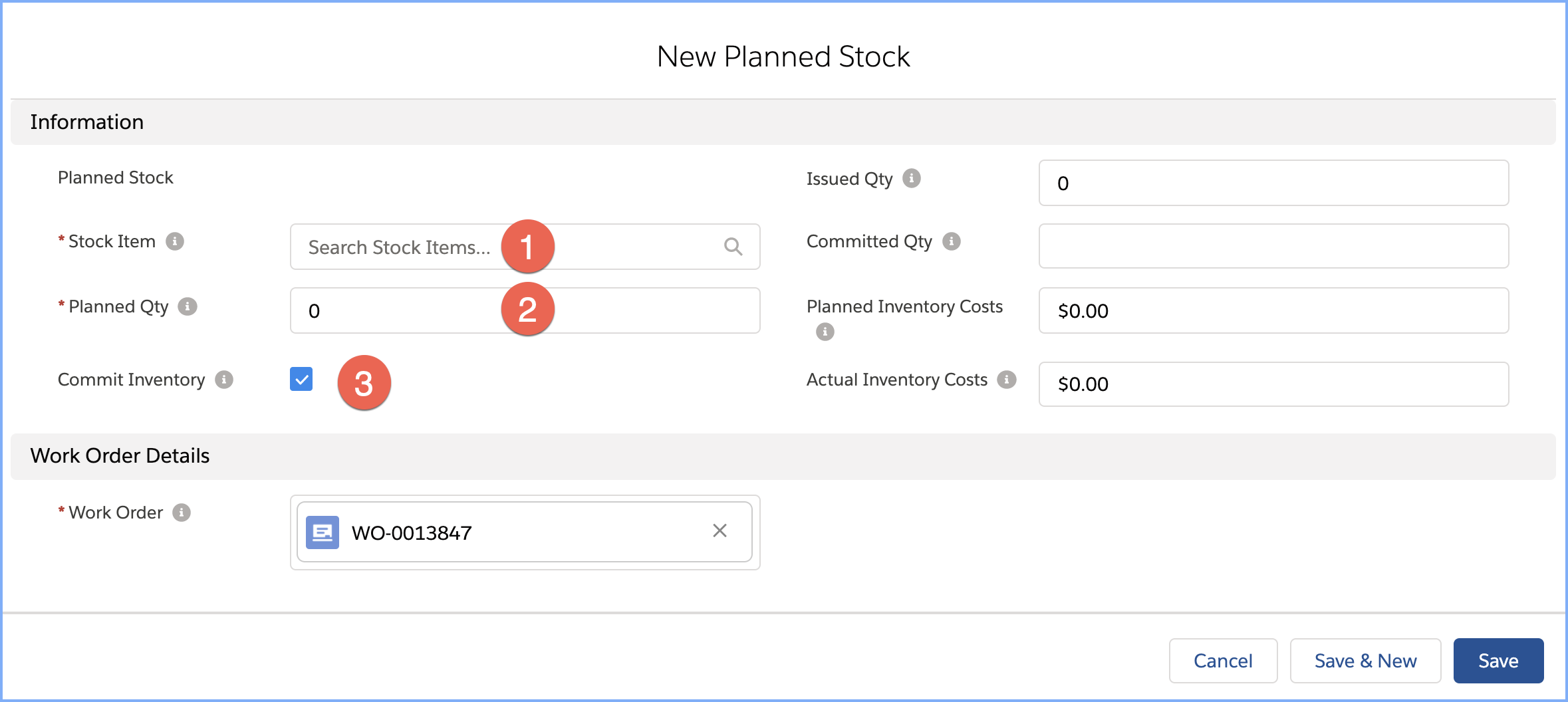Model Work Orders are pre-defined work order templates used in the preventive maintenance scheduling process. Similar to all other Work Order record types, Model Work Orders can contain multiple Work Tasks and Planned Stock. Model Work Orders can be organized by Asset Group.
Creating a new Model Work Order
- From the Work Order tab, click the New command button.
- Choose Model Work Order from the record type selector.
- The Description (255 char) serves as the “title” or “subject”.
- The Asset Group is used to organize Model Work Orders, Bills of Materials, and Standard Work Tasks for “like” equipment.
- The Status may be optionally used for internal processes. It does not affect the use of the Model Work Order.
- The Priority value will be copied to the new Work Order when the Model Work Order is “cloned”.
- The Type value will be copied to the new Work Order when the Model Work Order is “cloned”.
- The Instructions field is rich text and can contain formatted text, images, links, etc. Work Instructions can be entered in the Model Work Order Instructions field. They may also be optionally entered in the Work Task or Standard Work Task Instructions field.
- Optionally, enter a Planner.
- Save the record.

Work Tasks
By default, a single Work Task is automatically created. This behavior is configurable enabling you to change the Planned Hours on the initial Work Task or even suppress its creation.
You can edit the existing or add new Work Tasks via the Work Task related list.
- The Description of the first Work Task will default from the Work Order Description.
- Optionally, enter a Craft. Crafts are used to identify which Work Tasks are performed by what skill or resource group. Crafts have Planned Labor rates. The Work Task Planned Labor cost is derived from the Craft rate and Planned Hrs.
- When creating a new, or editing an existing Work Task, you can look up and select a Standard Work task. Doing so will update the Work Task with the Description, Instructions, and Planned Hrs from the Standard Work Task.
- Work instructions can be optionally entered at the Work Task level in addition to the Work Order header level.
- Planned Hrs defines the estimated labor hours to be recorded against the Work Task. This is NOT the estimated Duration in time to perform the Work Task.
- Enter an Assigned Vendor if this Work Task is to always be assigned to a specific Vendor/Contractor. This is a lookup to the Account.
- Enter the # of People required to safely perform the Work Task.

Planned Stock
You may optionally enter a list of Stock Items that are required to perform the Work Order in the form of Planned Stock. The two required data elements are the Stock Item and the Planned Qty.
Enter Planned Stock records from the Planned Stock related list.
- Look up and enter the Stock Item. Note that Stock Item records are Storeroom specific. In a multi-site organization, it is recommended that Model Work Orders be site-specific.
- Enter the Planned Qty, or expected quantity of the item to be used on the Work Order.
- You may optionally uncheck the Commit Inventory boolean attribute. Doing so will exclude this Planned Stock record from the inventory commitment rules. This attribute should be set to True for Stock Items that are required to perform the job. This attribute should be set to False for Stock Items that may be needed and are listed for ease of reference purposes.

The Issued Qty, Committed Qty, Planned Inventory Costs and Actual Inventory Costs are derived values and not user-editable.